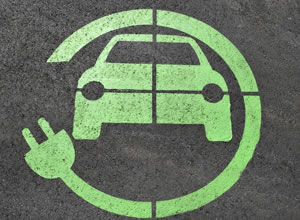This summer saw the release of two important new reports. Trajectories of the Earth System in the Anthropocene highlighted the risk that if we cross a key threshold, self-reinforcing feedbacks could trigger a ‘Hothouse Earth’ pathway. What Lies Beneath: The Understatement of Existential Climate Risk reminded us that climate research has tended to underplay the risks, and that the lower-probability, higher-impact events are now becoming more likely. But above and beyond academic research, stories and first-hand experiences from the increasing number of extreme weather events across the globe have deeply connected us to the fact that humanity is opening the door to a very serious climate emergency. Fortunately, there is a story to be told about what we can – and must – do rapidly to change our trajectory.
It is now just over 10 years since I was part of the Centre for Alternative Technology team that launched the very first Zero Carbon Britain report in the UK parliament. Back then, Britain’s climate target was still rooted in a 60% emissions reduction by 2050. Having talked with key climate scientists, it became clear to us that 60% was nowhere near enough. Yet back in 2007, presenting a scenario that took the UK to zero emissions in a couple of decades through switching to electric cars, 100% renewable energy and low-meat diets was a little off the radar.
However, much has changed – in many ways more quickly than we expected. Electric vehicles are becoming the new normal, the costs of solar PV and onshore and offshore wind have fallen faster than anyone imagined, and in the wake of the Paris Agreement global society is now on a path to net-zero emissions as far in advance of 2050 as possible. The earlier this is achieved, the greater the chance of limiting global temperature rise to near 1.5 °C, and so stabilising climate systems.
MODELS OF THE FUTURE
Humanity must now make some important choices. December 2018’s COP24 climate summit in Poland marks the beginning of a process by which every country must ratchet up its ambition so that the actions nations collectively undertake will actually deliver on the Paris targets agreed in 2015. But have you ever wondered what a zero carbon Los Angeles would look like? Or how an archipelago of islands could become carbon neutral? What our homes would be like? How we would be travelling or eating? Ever wondered what we actually need to do to have a reasonable chance of avoiding unstoppable climate feedbacks?
Fortunately, hundreds of people around the world have been working hard to develop robust models of possible climate-stable futures at global, regional, national and sub-national scales – from Tanzania to New York State, and from South Asia to the Baltic. To honour this important work, CAT has mapped over 130 scenarios that explore net-zero, deep decarbonisation or up to 100% renewable energy.
• A renewably powered Los Angeles would clean the air, create well-paid local jobs, promote energy independence, and lead to safer and healthier communities for the city’s 4 million residents.
• As with many other small islands and archipelagos, the Canary Islands has a high potential for renewable technologies – sufficient to supply the islands’ power, heat, and land transport.
• In India, where more than 300 million people have no access to electricity, renewables could become the new normal and could lead to significant benefits in both access to energy and the conservation of biodiversity and major ecosystems.
• A 100% renewable Iran is a real policy option by 2030 – it has been modelled on an hourly basis, including water desalination and synthesis of industrial gas.
• The Swansea Bay area could have 80% of new cars and over 30% of all cars powered by renewable electricity and an ultra-low-emission public transport system by 2035.
EVIDENCE-BASED OPTIMISM
All across the globe, the transition to 100% renewable electricity is feasible at every hour throughout the year and is more cost-effective than the existing system. Global electricity emissions could go to zero by 2050 or earlier, creating 36 million jobs in that sector compared to 19 million in 2015. Energy transition is no longer a question of technical feasibility or economic viability, but rather one of political will. It is becoming increasingly clear that, when all associated costs are included, doing the right thing is actually the cheapest option.
Our mapping reveals a diverse range of emerging scenarios, including many of the world’s largest emitters. They demonstrate that supply meets demand day and night, and across the seasons. They also show that land use is an underestimated asset, not only for sustainable agriculture, healthy diets and recreation, but also for natural carbon management. Tackling climate change and creating a fairer future for everyone is no longer a technological challenge: it’s a challenge of will, of ambition, and of vision. Whilst there are clear challenges, there are also huge multi-solving opportunities for adaptation, resilience, employment, heath, wellbeing, economics and natural systems.
To take the Paris Agreement seriously, all countries must be supported to prepare 2050-focused full net-zero scenarios that work across disciplines, linking energy, transport, buildings, diet, land-use and sustainable, natural carbon sinks. This will ensure that a country’s development pathway and industrial strategy can align with the mitigating actions required, creating trusted investment frameworks.
But perhaps more importantly, being able to access relevant scenarios enables citizens to visualise themselves living in a climate-secure, zero carbon future, and this can help break down barriers. We see the effects of climate change in our own backyards, we see the devastation daily on the news and in the documentaries, but when the news ends we are encouraged to inhabit a world of box-set friends who never take any of the actions we know we must all take, and never discuss the problems we know we all face. This creates a bubble that normalises doing nothing. I am increasingly confident that being able to visualise ourselves in a positive future helps strengthen the values that can burst this bubble.
We know there are massive disruptive changes already locked into the system, but showing that we have all the technologies needed for the shift gives confidence to hesitant policymakers and empowers citizens to take action together to help build a climate-safe, zero carbon future.
To access the Raising Ambition report, visit www.zerocarbonbritain.org








